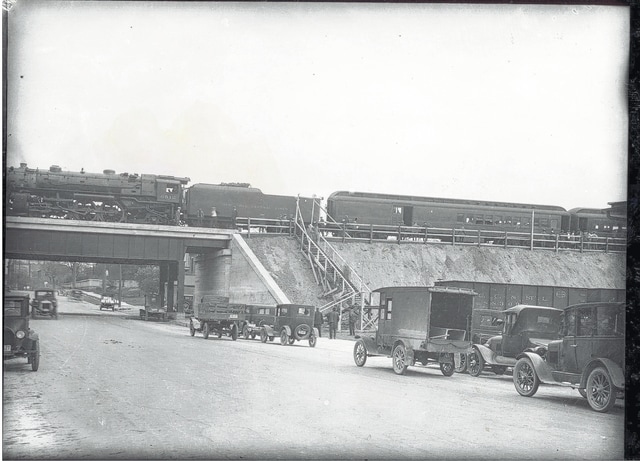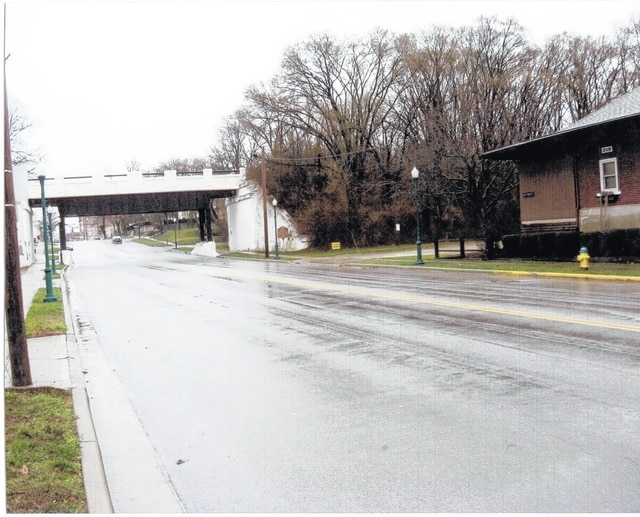

In 1926, the Big Four Rail System, soon to become the New York Central Railroad, constructed two sets of elevated railroad tracks through Urbana, requiring several overpasses to be built.
The “Then” 1927 photo looking east shows a steam locomotive pulling passenger cars on the elevated tracks and the long set of stairs workmen and passengers used to reach the train before a New York Central RR Depot could be built on the east side of the elevated tracks, south of Miami Street, along Dewey Avenue and before College Way. The old Big Four RR depot was torn down to relocate the tracks slightly west (being on the west side of the old tracks where the new elevated tracks needed to be built). The former rail-bed is now the parking area to the west of Gates Brothers Glass Shop on the north side of Miami Street. There must have been side tracks on the west side of the elevated tracks for unloading freight at the lower level back “then” since a freight car sits southwest of the elevated tracks, on the right side, at the street level, “then”. Miami Street has always been a heavily traveled street, being the combination of U. S. Route 36 and State Route 29 through the city of Urbana, Ohio. All the old automobiles, vans and trucks shows how busy it was “then”. If you look carefully through the viaduct you can see the stone wall that still surrounds the 323 Miami Street, old home of a Mosgrove family. The “Then” photo was taken shortly before they built the New York Central freight depot that still stands today at
The “Now” photo of 2016 shows the same location, the 500 block of Miami Street, looking east toward uptown Urbana. It unfortunately caught only one automobile in the picture (wrong time of day most likely) and no trains on the track. The stairs do not still exist. Near the viaduct stands an Ohio Historical Society Marker that tells significant history of the location. “Now” the old New York Central railroad freight depot built after 1927 can be seen, still a useful, well kept building in 2016. And if you carefully look through the viaduct you can still see the same stone wall surrounding the home at 323 Miami, today the home of the Bunnells. Champaign County is fortunate to still have many attractive, maintained, historical buildings that have survived the test of time, adding character to our landscape and a tribute to both those that preceded us and those citizens now that are taking good care of their buildings. Come to the Champaign County Historical Society Museum at 809 East Lawn Avenue to see and learn about our local heritage. Open Mondays and Tuesdays from 10 a.m. to 4 p.m. staffed with volunteers and one Sunday a month with a 2 p.m. program.



